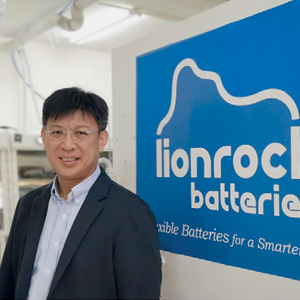THANK YOU FOR SUBSCRIBING

Simulation Technology Driving Product Innovation
Francis Sun, General Manager, Greater China, and ANSYS, Inc.


Francis Sun, General Manager, Greater China,
People might not realize simulation technology exists in every aspect of our lives, But if you’ve ever seen a rocket launch, flown on an airplane, driven a car, used a computer, touched a mobile device, crossed a bridge, or put on wearable technology, chances are, you’ve used a product where simulation technology played a critical role in its creation. Simulation helps the world’s most innovative companies deliver radically better products to their customers, solve the most complex design challenges and engineer products limited only by imagination.
Unconsciously, simulation technology is so close to us.
So, why company’s product innovation need to rely on simulation? This is an obvious but plagued question.
Consumers are demanding more innovation products than ever before. New product development is the engine that fuels growth in companies.
Virtual simulation is the analysis or simulation of a product’s behavior in a virtual environment, creating a virtual prototype of the product design. Building and testing design prototypes virtually allows hundreds or even thousands of permutations to occur rapidly. This allows designers to spend more time evaluating risky, but high potential ideas. Simulation is truly no longer an option for company doing innovation.
As product complexity grows, so does the need for enhanced simulation capabilities. The hottest innovation areas require system simulation to work. The complexity within systems arises from the challenges of connecting the individual pieces to ensure they work together as designed and expected. We also live in a world where multiple physical forces are at play, and the products we produce are often subject to many of these physical forces simultaneously. Fluid forces, thermal effects, structural integrity and electromagnetic radiation can all impact performance of products and industrial processes. If you try to isolate the multiple forces in play, you may not get an accurate prediction of behavior. One unified simulation platform needed to effectively manage all the simulations data, help engineers to examine these effects in combination and isolation, achieving the highest fidelity solution when it's needed.
According to Aberdeen Group, simulation usage throughout the product development lifecycle has undeniably grown in recent years. The primary derives behind this increased significance are the improvements in time-to-market, product quality, and overall cost, however, the ability to predict product performance faster and more reliably has also allowed designers to release more innovative offerings, open up new market opportunities and ultimately, fuel top-line growth for the business. 73percent of companies surveyed stated they want to use simulation earlier and more often in the development process.
Research-based manufacturing is hoping to open a door to innovation, building their research and innovation based on simulation is undoubtedly the key to drive their top-line growth.
See More: Top Sensor Technology Companies











